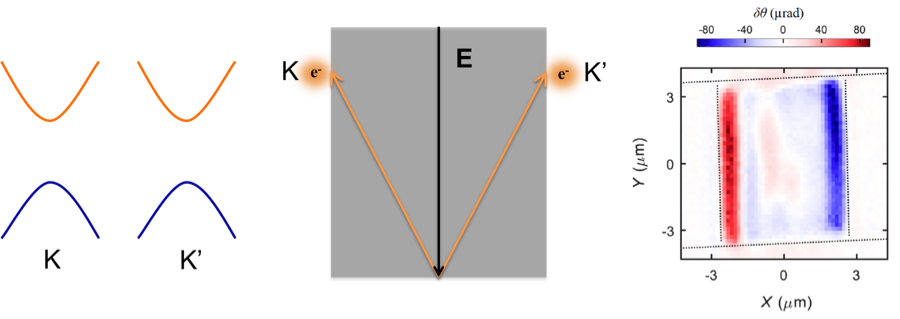
Transition metal dichalcogenides (TMDs, MX2 with M = Mo, W and X = S, Se) are a new class of two-dimensional (2D) semiconductors. We fabricate atomically thin samples, create devices with them as active elements, and employ optical probes to study their unique properties.


We fabricate superconductors of single- or few-layer thickness (such as TMD metal NbSe2) and develop a range of transport measurement techniques to probe their unconventional properties.
Optical and electronic properties of graphene
Graphene is a single layer of carbon atoms arranged in a honeycomb structure. We create single- and few-layer graphene and employ optical spectroscopic techniques to explore their properties.
Terahertz time-domain spectroscopy
Light pulses as short as two optical cycles (~ 5 femtoseconds) can now be produced by modelocked lasers. These pulses have dramatically advanced many areas of ultrafast spectroscopy. One of these is the time-domain spectroscopy of the THz or far-infrared spectral region (1 THz ↔ 300 μm ↔ 33.3 cm-1 ↔ 4.1 meV ↔ 47.6 K). We make use of these ultrashort pulses of propagating electromagnetic radiation to measure conductivity in the THz spectral regime. In particular, when combined with a time-synchronized femtosecond excitation pulse, the method is suitable for the investigation of electronic charge transport under nonequilibrium conditions. These attributes permit THz spectroscopy to circumvent many of the constraints of conventional transport measurement techniques.